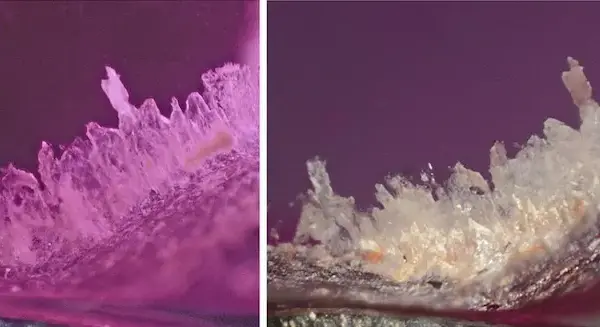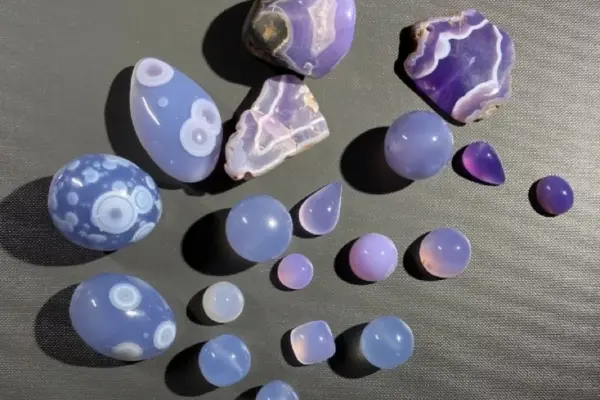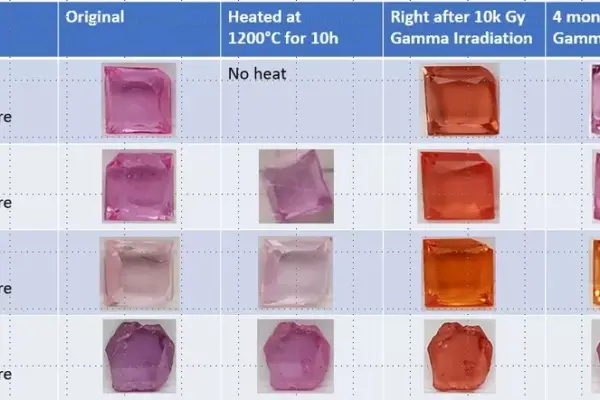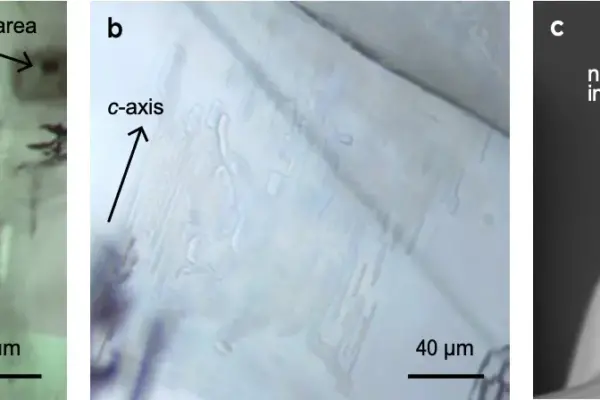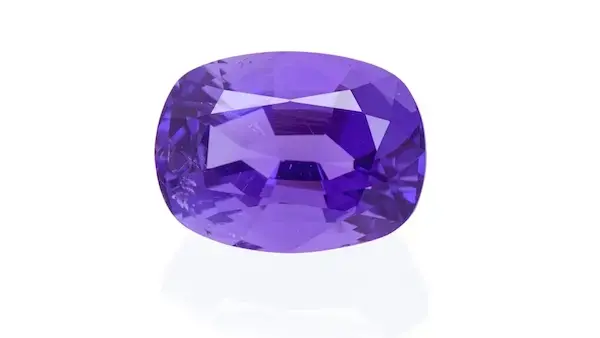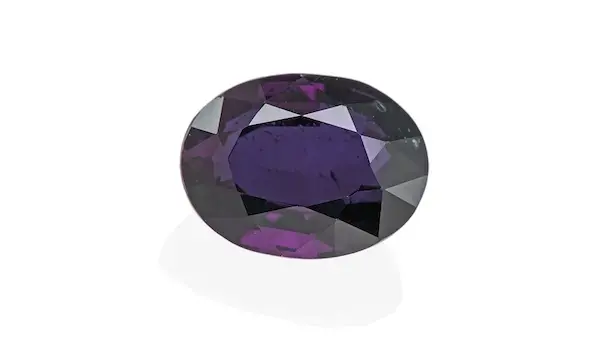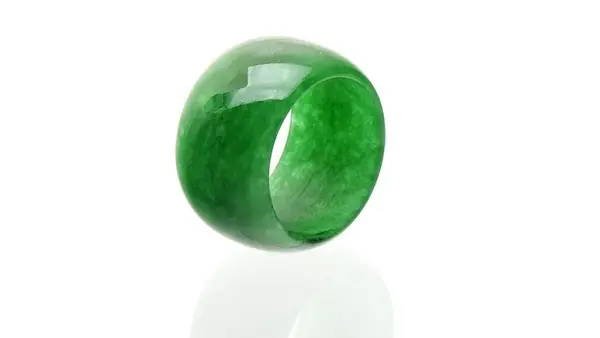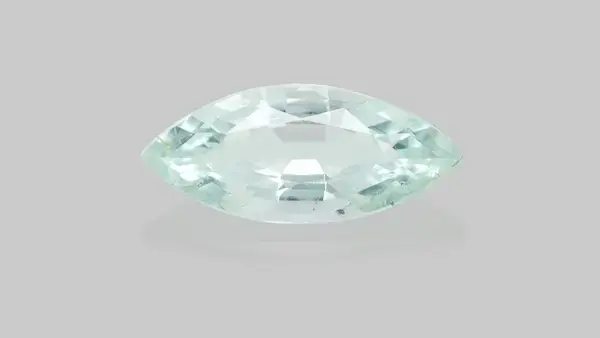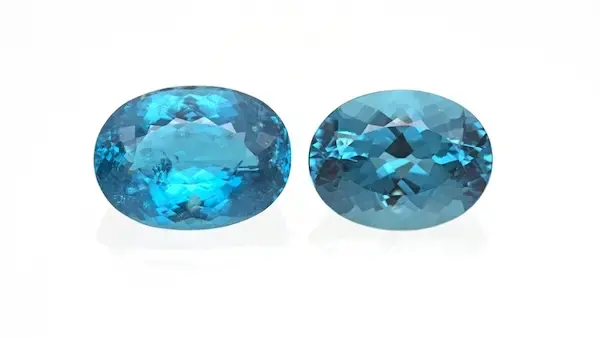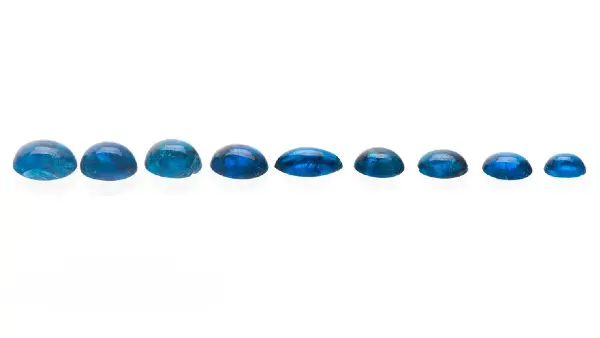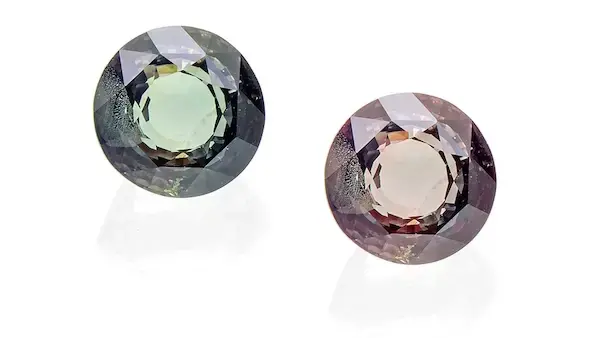Coloured gemstones
Coloured gemstones come in an incredible array of colours and varieties. Emeralds, rubies and sapphires are most well-known, but our testing services and research efforts go far beyond these three varieties. Our expertise in treatment detection and origin determination of coloured gemstones is based on decades of research, a large reference collection and continuously developing new techniques to analyse these treasures of nature.
We test different types of coloured stones
- Single or series of loose coloured gemstones
- Gemstones mounted in jewellery
- Coloured stone bead necklaces
For more specific information on disclosure and standards, and issues related to specific coloured gemstones please visit the Understand SSEF Reports page, which offers extensive details on individual varieties of gemstones.
Explore our research library
Dehydration of Diaspore and Goethite during Low-Temperature Heating as Criterion to Separate Unheated from Heated Rubies and Sapphires
Dehydration of Diaspore and Goethite during Low-Temperature Heating as Criterion to Separate Unheated from Heated Rubies and Sapphires. Minerals 2023, 13, 1557.
Phase transformations as important markers for heat treatment detection in corundum and other gemstones
Phase transformations as important markers for heat treatment detection in corundum and other gemstones. IGC 2023 Proceedings, 111-113.
Purple to bluish grey chalcedony from Ethiopia
In the past 15 years, Ethiopia has repeatedly gained attention for a variety of new gem finds. In 2008, a large deposit of white play-of-colour opal was found (Rondeau et al., 2010), followed by black opal with play-of-colour in 2013 (Kiefert et al., 2014).
Effects of Gamma Irradiation on Ruby and Pink Sapphire and Potential Detection Methods in Gem Labs
Keywords: Ruby, Pink sapphire, Gamma irradiation, UV-VIS, Raman, R-Line
Further Characterisation of Native Copper Inclusions in Cu-Bearing Tourmaline
Further Characterisation of Native Copper Inclusions in Cu-Bearing Tourmaline. The Journal of Gemmology, 38(5), 427-429.
Purple love
It is always a pleasure for our team to analyse gemstones which are not so common, or sometimes even very rare, but which may compete in beauty and quality (but often not in hardness) with the most prestigious classic gemstones.
Dark purple chrysoberyl
Since about three years, we see at SSEF occasionally chrysoberyl samples of very dark purplish to purplish brown colour, sometimes of quite impressive size (>10 ct). Based on chemical composition, these chrysoberyls show distinct concentration of chromium, but no evident change of colour, thus do no
Jadeite: impregnated and dyed
Jadeite-jade of saturated emerald green colour is highly valued in Asia. It is therefore not astonishing to see in the market either heavily treated jadeite-jade or even imitations made of different minerals which pretend to be fine quality jadeite-jade of “Imperial green” colour.
Saturation too low for Paraiba tourmaline
Copper-bearing tourmaline, also known as Paraiba tourmaline in the trade, may come in a range of colours from blue to green. Similarly, the colour saturation of such copper-bearing tourmalines may vary largely, from saturated and vibrant – also known as “electric” or “neon” – to very lig
A perfect match: Paraiba tourmaline and Indicolite tourmaline
A few months ago, a client submitted to SSEF two tourmalines of attractive and matching shape, size and colour, both supposedly being Paraiba tourmalines (Figure 1). Chemical analyses and absorption spectra (UV-Vis-NIR) quickly revealed that their composition and colour cause was much less matching
Blue surprise: apatite and not Paraiba tourmaline
Last summer, the SSEF received a series of nine small blue cabochons ranging in weight from 0.4 to 1.5 ct. The client assumed that these stones were Paraiba tourmalines from a very early production of the Sao José da Batahla mine in the state of Paraiba in Brazil, as they were safeguarded for seve
An interesting chrysoberyl-alexandrite combination
The mineral chrysoberyl BeAl2O4 is an attractive gemstone that shows a wide variation of colours mostly ranging from yellow to green and brownish green to dark brown. These colours are mainly due to the presence of iron and sometimes vanadium as chromophore elements inside the crystal lattice struct
